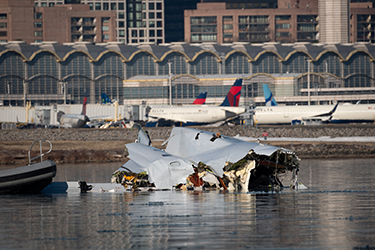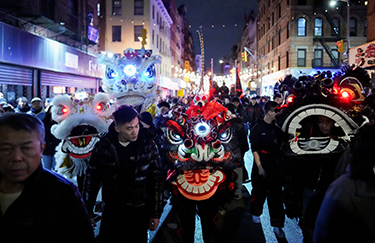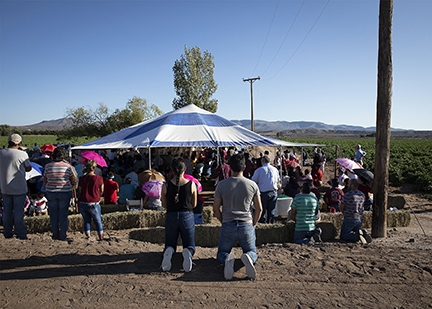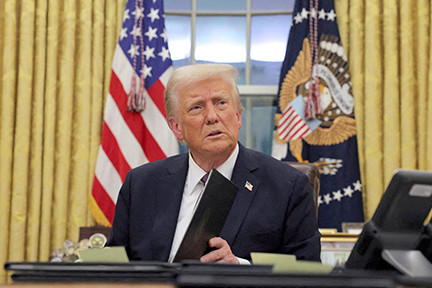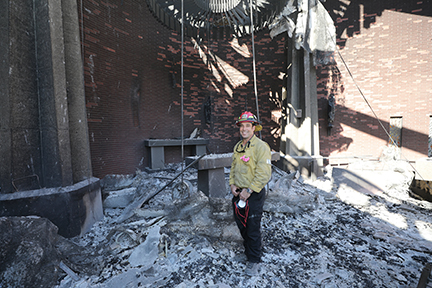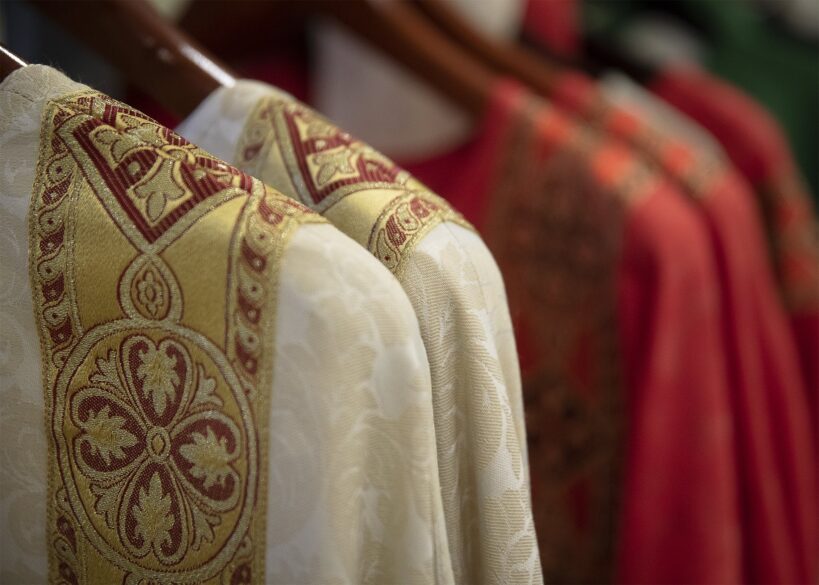By Maria Wiering
(OSV News) – “Let me say very simply: I want more babies in the United States of America,” Vice President JD Vance told a cheering crowd at the 52nd National March for Life Jan. 24.
“I want more happy children in our country, and I want beautiful young men and women who are eager to welcome them into the world and eager to raise them,” he said. “And it is the task of our government to make it easier for young moms and dads to afford to have kids, to bring them into the world, and to welcome them as the blessings that we know they are, here at the March for Life.”
In his first public appearance following Inauguration Day, Vance was the final speaker at the annual march’s two-hour rally preceding attendees’ walk from the Washington Monument grounds to the U.S. Supreme Court Building. Other speakers included Florida Gov. Ron DeSantis, Senate Majority Leader John Thune, R-S.D., and House Speaker Mike Johnson, R-La. It is the first time both leaders of Congress’s chambers attended a March for Life.
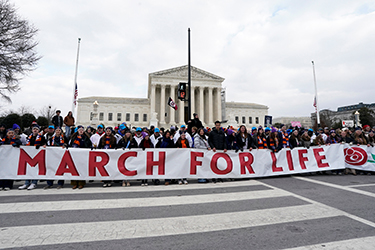
While most speakers – policymakers and pro-life advocates – spoke specifically about making abortion “illegal and unthinkable” in post-Dobbs America, Vance championed a pro-family vision that not only rejected abortion, but also supported raising children.
Noting his own three young children, Vance, who is Catholic, said, “The task of our movement is to protect innocent life. It’s to defend the unborn; and it’s also to be pro-family and pro-life in the fullest sense of that word possible.”
As in years past, the march drew tens of thousands, many of them young adults. Some traveled more than a day on buses, missing high school and college classes to join others along the National Mall in the mid-Atlantic cold.
The 2025 march also commemorated a leadership change for the event’s organization, with longtime president Jeanne Mancini handing off her role to March for Life’s incoming president, Jennie Bradley Lichter. While Mancini emceed the 2025 march, both women spoke, with Bradley Lichter also introducing Vance.
The march was founded to protest Roe v. Wade, the 1973 Supreme Court decision that legalized abortion in all 50 states. That decision was overturned in 2022 with the court’s Dobbs v. Jackson Women’s Health Organization decision, thus returning abortion policy to lawmakers. At the rally, March for Life leaders addressed the march’s role in the changed abortion landscape, with abortion laws now varying widely by state. The march, they insisted, must continue.
“Today we affirm that the pro-life generation will not rest until every single abortion facility in our nation closes its door for good. We will march until every child is protected by federal law, until abortion is unthinkable, and until every pregnant woman receives excellent prenatal care,” said Hannah Lape, president of Wheaton College Voice for Life. Her group carried the 2025 march’s iconic banner.
The march came four days after President Donald Trump was sworn in for his second term, following a campaign that disappointed many pro-life advocates in certain respects. Trump was hailed for pro-life actions during his first term. Since then, he reversed support for a federal abortion ban, stating he believes U.S. states should determine their own abortion laws. He also posted on social media positively about “reproductive rights,” and indicated he would not restrict access to mifepristone. The drug, while it is prescribed in some miscarriage care protocols, is widely used for nearly two-thirds of abortions in the U.S.
A majority of Americans support some legal limits on abortion, while keeping the practice largely intact, according to a Knights of Columbus-Marist poll released Jan. 23. The annual survey found that 83% of Americans supported pregnancy resource centers and 67% of Americans support some legal limits for abortion. But 60% support limiting abortions to the first three months of pregnancy – a limit that would leave most abortions legal as nine out of 10 abortions occur in the first trimester.
“All of you here – all of you – have the power to change minds,” Lila Rose, a Catholic and longtime pro-life advocate, told the crowd during the march rally. “You are the voice for those who have no voice. Remember, science is on our side. The truth is on our side. We must simply have the courage to speak the truth with love.”
The March for Life was preceded by two large-scale events: Life Fest 2025 at EagleBank Arena in Fairfax, Virginia, held the evening before and the morning of the march; and the National Prayer Vigil for Life at the Basilica of the National Shrine of the Immaculate Conception in Washington.
Marcela Rojas, who lives in the Archdiocese of New York, said that she attended the march with a group of 75 people, many of them mothers who brought their small children.
“Within our being, in our womb, there is a life,” she said of pregnant mothers. “It is a life that we cannot choose for. It is already another life that does not belong to us, and we are not the ones to decide whether it lives or not.”
(Maria Wiering is senior writer for OSV News. Contributing to this story was OSV News correspondent Marietha Góngora V. in Washington.)

